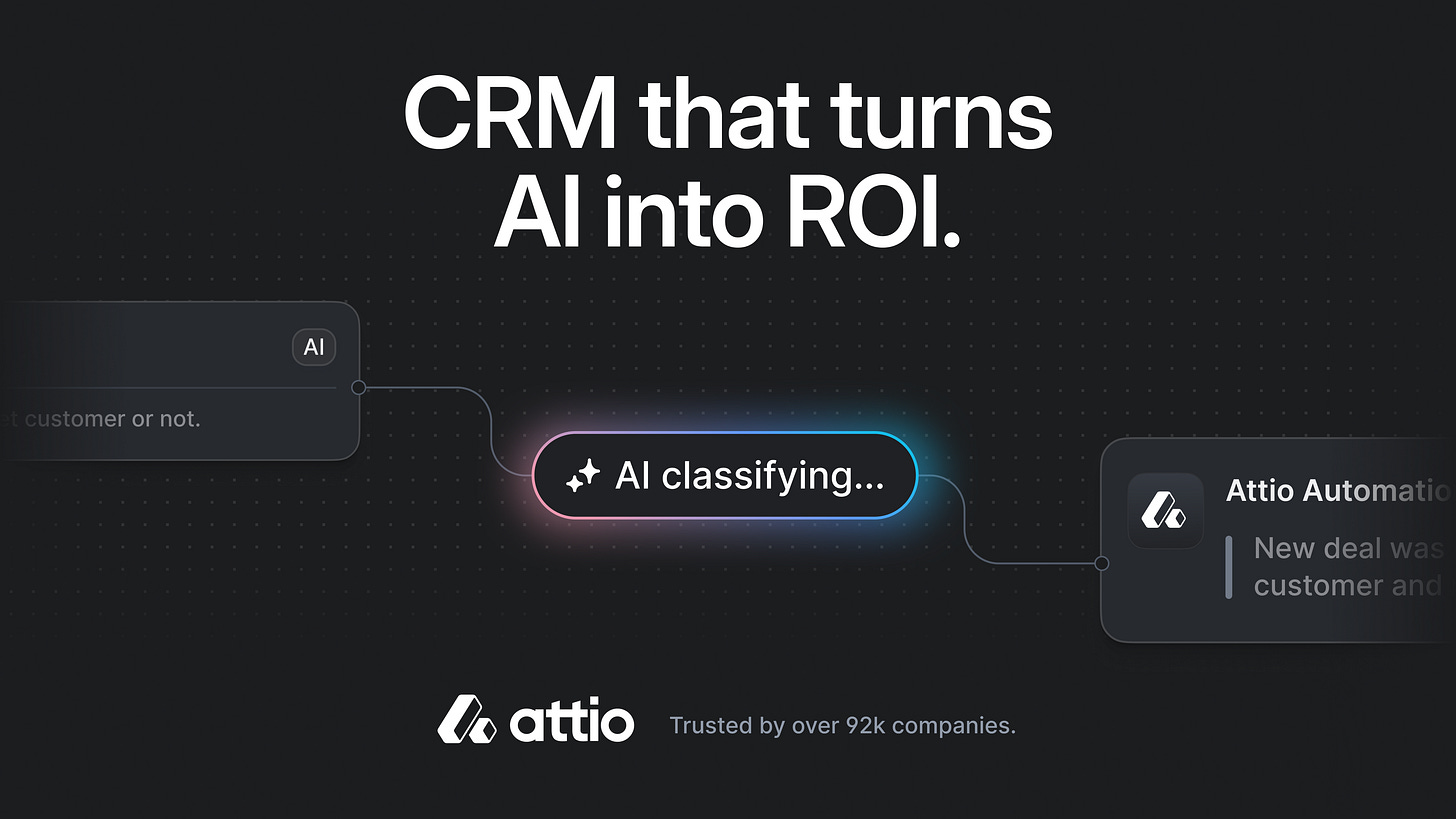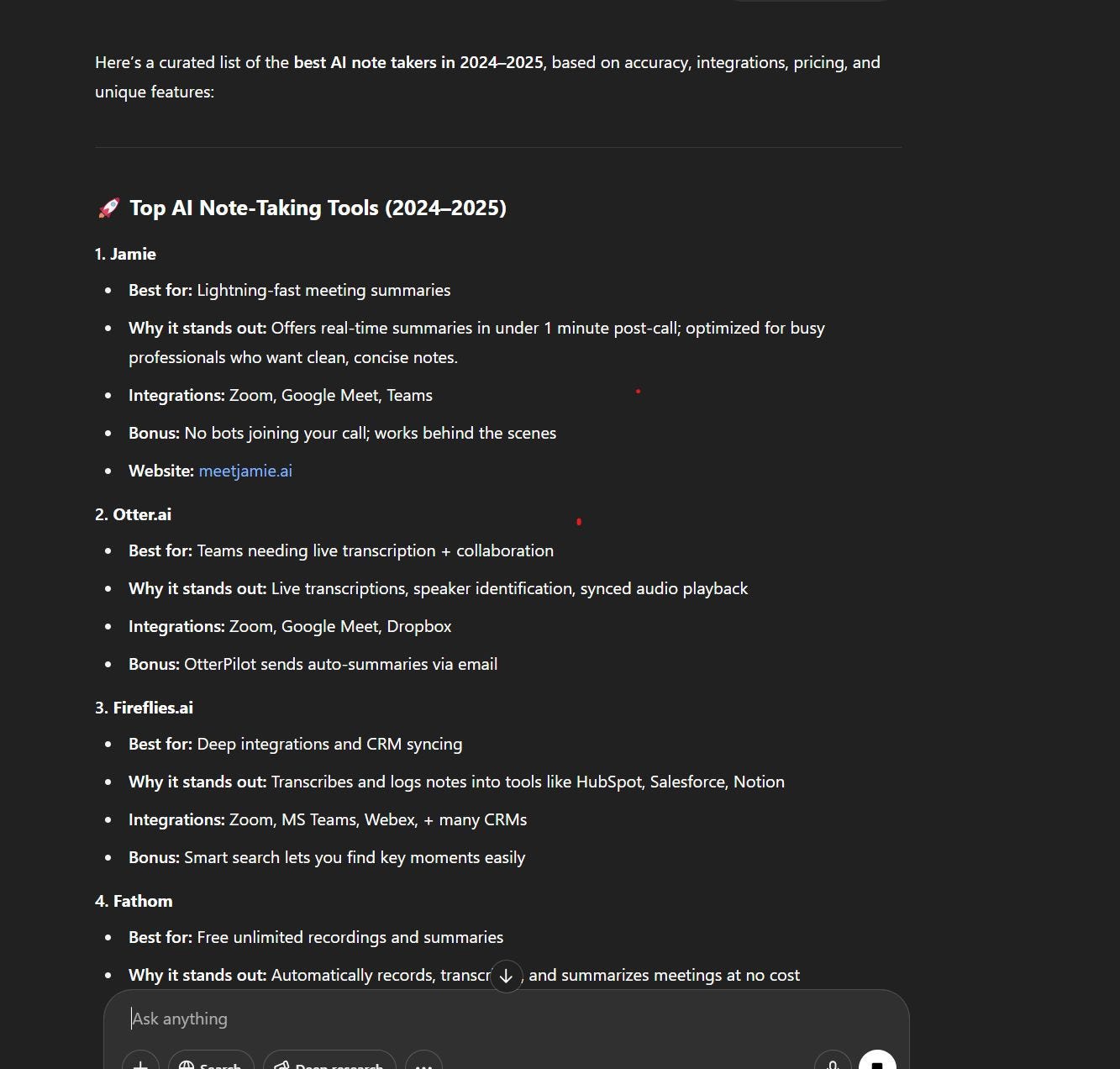How to optimize for LLMs (Playbook)
Here's how AI notetaker Jamie dominated LLM visibility
👋 Hey, I’m George Chasiotis. Welcome to GrowthWaves, your weekly dose of B2B growth insights—featuring powerful case studies, emerging trends, and unconventional strategies you won’t find anywhere else.
This note is brought to you by Attio.
I launched a new company a month ago.
The CRM we use is Attio.
And I wouldn’t recommend it here if we weren’t customers ourselves.
It’s a modern CRM that doesn’t feel like it was built in 2008.
Clean UX, fast, and powerful where it matters.
Some of the features we rely on:
Enrichment and AI fields that actually save time
Call intelligence to analyze conversations and spot signals
Powerful workflows to automate the boring stuff (e.g., company research)
Sequences you can combine with workflows for outreach, follow-ups, and pipeline building
They also have a solid freemium plan that is perfect for small teams that want to build momentum without the usual CRM friction.
In our second guest post on GrowthWaves, my friend and Co-Founder John Ozuysal shares a playbook based on what his team did at AI Notetaker Jamie to increase visibility in AI search engines.
A few weeks ago, I came across a LinkedIn post where Jamie’s team broke down the results they saw.
“That could be useful to GrowthWaves’ audience,” I thought.
Plus, AI search optimization keeps coming up in conversations with clients, partners, and friends.
So, I asked John if we could feature the playbook as a guest post on GrowthWaves.
He said yes, so here we are.
John takes it from here.
Enjoy!
Introduction
ChatGPT Search was released on the 25th of July, 2024, with the goal of fundamentally changing how people search for information and solutions.
The concept was simple: why should users have to read through thousands of words to find what they are looking for and spend hours doing due diligence when they could simply get a recommendation?
Instead of searching for ‘’best email marketing software for small businesses’’ and scrolling through articles, landing pages, and comparison guides, users can now get a direct recommendation of the few best tools, and users can provide as much context about their business, niche, ideal customers, and use case as needed.
In this new golden land of opportunity, where advertising has not come yet and it’s at its purest form, SEOs around the world started trying to ‘’crack the code’’ and ‘’Generative Engine Optimization’’ (GEO) was coined.
In the beginning, it was all about making assumptions, but as time went on, SEOs like me have been experimenting with various ways of getting ChatGPT Search and other AI LLMs like Perplexity to recommend the brands we work with.
It’s similar to how we all started with SEO in the beginning – trial and error, combined with reverse-engineering of the algorithm until you start finding patterns.
Note: After months of trial and error, we managed to get Jamie AI, to be recommended as the best AI note-taking app on the market – ahead of established competitors like Fireflies and Otter AI.
I wanted to create this GEO playbook so I can share my findings and approach to getting recommended in AI search engines based on the work I’ve done for Jamie AI, as well as other best practices that I’ve seen from other brands.
But first, let’s get started with the basics.
What do we know about AI LLMs’ recommendation algorithm so far?
Even though AI LLMs do not explicitly disclose their recommendation algorithm, here are a few things the industry has noticed when optimizing for them:



